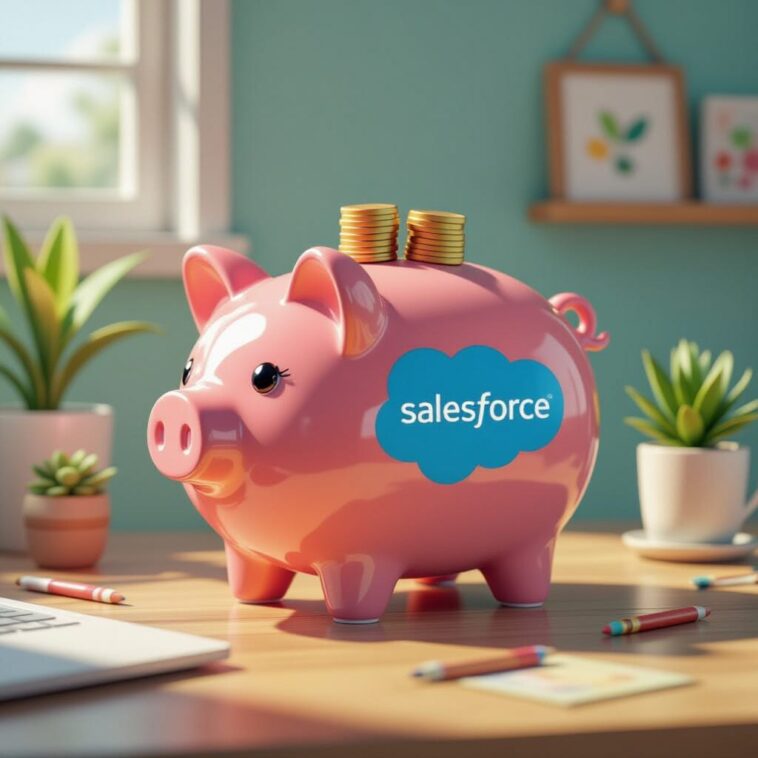It was the best of algorithms, it was the worst of quarterly reports for SaaS companies. In the grand bazaar of enterprise software, where dreams are sold by the seat and nightmares are delivered by the server rack, the year 2024 has produced a spectacle so magnificent in its absurdity that even the most seasoned venture capitalists have been reduced to staring at spreadsheets with the bewildered expression of Victorian orphans discovering indoor plumbing.
Behold the numbers that have sent shockwaves through the mahogany boardrooms of Sand Hill Road: OpenAI, that precocious child of artificial intelligence, has ascended to a $10 billion annualized revenue run rate (ARR), while its slightly younger sibling Anthropic has achieved $3 billion in annualized revenue, growing from a mere $1 billion in December 2024. Meanwhile, the grand patriarch of this digital gold rush, Nvidia, has seen its datacenter revenue soar to $30.77 billion in Q3 alone, driven primarily by the insatiable appetite of AI companies for computational power.
These figures, when combined with other AI infrastructure providers, have not merely challenged the traditional Software-as-a-Service establishment—they have devoured it whole, then asked for seconds. The revenue from AI Labs and infrastructure companies has eclipsed the entire public SaaS sector in 2024, and threatens to nearly double traditional SaaS revenue on a net new basis this year. It is as if the digital David has not only slain Goliath but proceeded to set up a lemonade stand on his corpse.
The Great Inversion of Software Fortune
In the sprawling metropolis of Silicon Valley, where the distance between a billion-dollar valuation and bankruptcy can be measured in quarterly earnings calls, we witness a transformation as dramatic as any Dickensian plot twist. The established nobility of enterprise software—those stalwart SaaS companies that have ruled the subscription economy for decades—now find themselves in the peculiar position of dinner guests who discover the party has moved to another house entirely, and nobody thought to mention it.
Consider the mathematical poetry of this reversal: OpenAI’s revenue trajectory shows growth from $200 million in 2022 to $3.7 billion in 2024, with projections reaching $12.7 billion by 2025. This represents a growth rate that would make even the most optimistic SaaS company’s hockey stick chart appear as flat as a pancake served at a geometry convention. Meanwhile, Anthropic has demonstrated equally impressive expansion, jumping from $100 million in 2023 to $200 million by early 2024, then exploding to $3 billion by May 2025—a trajectory so steep it would give mountain climbers vertigo.
These AI darlings have achieved what traditional enterprise software companies spent decades building, but in a timeframe that suggests either supernatural intervention or the kind of market timing that usually only exists in venture capitalist fever dreams. The combined revenues of leading AI companies grew by over 9x in 2023-2024, with OpenAI, Anthropic, and Google DeepMind each growing their revenue over 90% in the second half of 2024 alone.
The Incumbent’s Lament
In the traditional SaaS quarters of this digital city, a different story unfolds. Here dwell the established merchants of enterprise software—Salesforce, ServiceNow, Workday, and their brethren—who have spent years perfecting the art of extracting monthly payments from corporate customers in exchange for the promise of “digital transformation.” These companies, with their carefully cultivated customer success teams and their obsessive measurement of churn rates, now find themselves in the position of carriage manufacturers watching the first automobiles roll down cobblestone streets.
The cruel irony is not lost on industry observers: these SaaS incumbents have spent considerable resources attempting to sprinkle AI fairy dust onto their existing products, yet the actual AI revenue boom is occurring in territories they don’t occupy. It’s as if they’ve been mining for gold in their own backyards while the California Gold Rush unfolds in the next state over. Despite having armies of product managers dedicated to “AI-enabling” their platforms, and despite countless press releases announcing “AI-powered” features, the current set of 100+ public SaaS companies is not yet seeing meaningful revenue growth from their AI offerings.
This phenomenon reveals a truth as old as commerce itself: sometimes the most disruptive innovations emerge not from established players incrementally improving their offerings, but from entirely new entities building solutions that make the old problems irrelevant – this is the whole premise of the innovator’s dilemma. While traditional SaaS companies have been focused on helping businesses manage their existing workflows more efficiently, AI companies have been busy teaching computers to perform the workflows themselves.
The Infrastructure Kings
At the center of this economic transformation sits Nvidia, playing the role of both arms dealer and kingmaker in the AI revolution. The company’s datacenter revenue has grown by 427% year over year, reaching $22.6 billion in a single quarter, representing 87% of Nvidia’s overall revenue. This growth has been so dramatic that CEO Jensen Huang has declared the beginning of “the next industrial revolution,” where traditional data centers are being replaced by “AI factories” that produce artificial intelligence as a commodity.
The metaphor is more apt than perhaps even Huang realizes. Just as the Industrial Revolution created new categories of wealth while rendering others obsolete, the AI revolution is establishing new hierarchies of economic power. Companies that control the fundamental infrastructure—the chips, the cloud computing resources, the training pipelines—have positioned themselves as the nobility of this new economy, while traditional software companies risk being relegated to the role of digital serfs.
The concentration of this new wealth is remarkable in its specificity. Microsoft, through its strategic partnership with OpenAI, reports $13 billion in revenues from its AI business, largely driven by Copilot sales that utilize OpenAI’s models. Meanwhile, cloud service providers represent approximately 49.5% of Nvidia’s datacenter revenues, as they race to build the massive GPU clusters that AI companies require for training and inference.
The Great Uncoupling
What we’re witnessing is nothing less than the great uncoupling of software value from traditional business models. The SaaS paradigm, built on the foundation of monthly or annual subscriptions for access to software tools, is being challenged by AI models that can be consumed in entirely different ways—through API calls, through embedded intelligence, through autonomous agents that perform tasks rather than merely facilitate them.
This shift represents a fundamental change in how business value is created and captured in the software industry. While SaaS companies have built their empires on the concept of “land and expand”—acquiring customers and gradually increasing their spending over time—AI companies are demonstrating the possibility of “land and automate”—solving customer problems so comprehensively that the traditional software interface becomes unnecessary.
The economic implications are staggering. When an AI model can generate code, write marketing copy, analyze data, and make strategic recommendations, the entire category of “productivity software” begins to look like a historical curiosity. It’s as if we’ve discovered that instead of selling people increasingly sophisticated hammers, we can simply build their houses for them.
The Venture Capital Feeding Frenzy
In the gilded corridors of venture capital firms, where partners speak in multiples and think in decades, the AI revenue explosion has created something approaching religious ecstasy. Private markets have seen highly concentrated funding, with $1 billion-plus “ultra-round” financings becoming commonplace for AI-native companies. The valuations assigned to these companies often reach 568 times their revenue, reflecting not current performance but the market’s belief in the transformative potential of artificial intelligence.
This speculative fervor has created a feedback loop that would make even the most optimistic economist nervous. As AI companies demonstrate explosive revenue growth, they attract more investment, which allows them to hire more talent, acquire more computing resources, and accelerate their development cycles, which in turn generates more revenue and attracts more investment. It’s a virtuous cycle that shows no signs of slowing, provided the underlying technology continues to deliver on its promises.
Meanwhile, traditional SaaS companies find themselves competing for investment attention with companies that are growing 10x faster and addressing markets that are potentially 100x larger. The contrast is so stark that some venture capitalists have begun to question whether traditional enterprise software represents a viable investment category at all, or whether it’s destined to become a legacy industry maintained primarily for companies too risk-averse to adopt AI alternatives.
The Human Element
Beneath these financial machinations lies a more profound transformation: the changing relationship between humans and software. Traditional SaaS applications required humans to learn new interfaces, master new workflows, and adapt their behavior to accommodate software limitations. AI applications, by contrast, promise to adapt to human needs, learning from user behavior and automating tasks that previously required manual intervention.
This shift has profound implications for how software companies think about product development, customer acquisition, and long-term value creation. Instead of building features that users must learn to use, AI companies are building intelligence that learns to serve users. The competitive moat shifts from user interface design and feature comprehensiveness to data quality, model performance, and algorithmic sophistication.
The result is a new form of software company that looks nothing like its predecessors. These AI-first organizations often have smaller sales teams, shorter customer onboarding cycles, and entirely different approaches to pricing and packaging. They’re building products that become more valuable as they’re used, rather than products that extract value through feature complexity and switching costs.
The Great Reckoning
As we stand at this inflection point in the history of enterprise software, the magnitude of the transformation becomes clear. We are witnessing not merely a new category of technology companies, but the emergence of an entirely new economic paradigm for software value creation. The AI revenue explosion represents the first phase of what may be the most significant shift in business computing since the transition from mainframes to personal computers.
The established SaaS companies, despite their current predicament, are not without options. Some will successfully integrate AI capabilities into their existing platforms, transforming from software tools into intelligent agents. Others will be acquired by AI companies seeking distribution channels and customer relationships. Still others may find new niches in the AI ecosystem, providing specialized services that complement rather than compete with artificial intelligence.
But make no mistake: the world of enterprise software has fundamentally changed. The revenue figures from 2024 are not an anomaly or a temporary bubble—they represent the first concrete evidence of a new economic reality where artificial intelligence companies can grow faster, scale more efficiently, and capture more value than any software category that preceded them.
In this tale of two softwares, we are witnessing the birth of a new digital aristocracy, one built not on the patient accumulation of subscription revenue, but on the sudden, explosive monetization of machine intelligence. The question is not whether this transformation will continue, but how quickly the old order will adapt to the new reality—or whether it will adapt at all.
The numbers, as always, tell the story with mathematical precision: in the space of two years, artificial intelligence has not merely entered the enterprise software market—it has conquered it, colonized it, and begun reshaping it in its own image. The age of AI-first software has arrived, and traditional SaaS companies are learning, perhaps too late, that in the digital economy, evolution isn’t optional—it’s the only path to survival.
Have you noticed this seismic shift in your own industry? Are you working at a traditional SaaS company scrambling to add AI features, or watching from the sidelines as AI companies rewrite the rules of enterprise software? What do you think happens to the hundreds of “AI-washing” SaaS companies when the market realizes their AI features are just expensive ChatGPT wrappers? Share your thoughts on whether we’re witnessing creative destruction or just the latest Silicon Valley bubble getting ready to burst.
Enjoyed this dose of uncomfortable truth? This article is just one layer of the onion.
My new book, “The Subtle Art of Not Giving a Prompt,” is the definitive survival manual for the AI age. It’s a guide to thriving in a world of intelligent machines by first admitting everything you fear is wrong (and probably your fault).
If you want to stop panicking about AI and start using it as a tool for your own liberation, this is the book you need. Or you can listen to the audiobook for free on YouTube.
>> Get your copy now (eBook & Paperback available) <<





GIPHY App Key not set. Please check settings